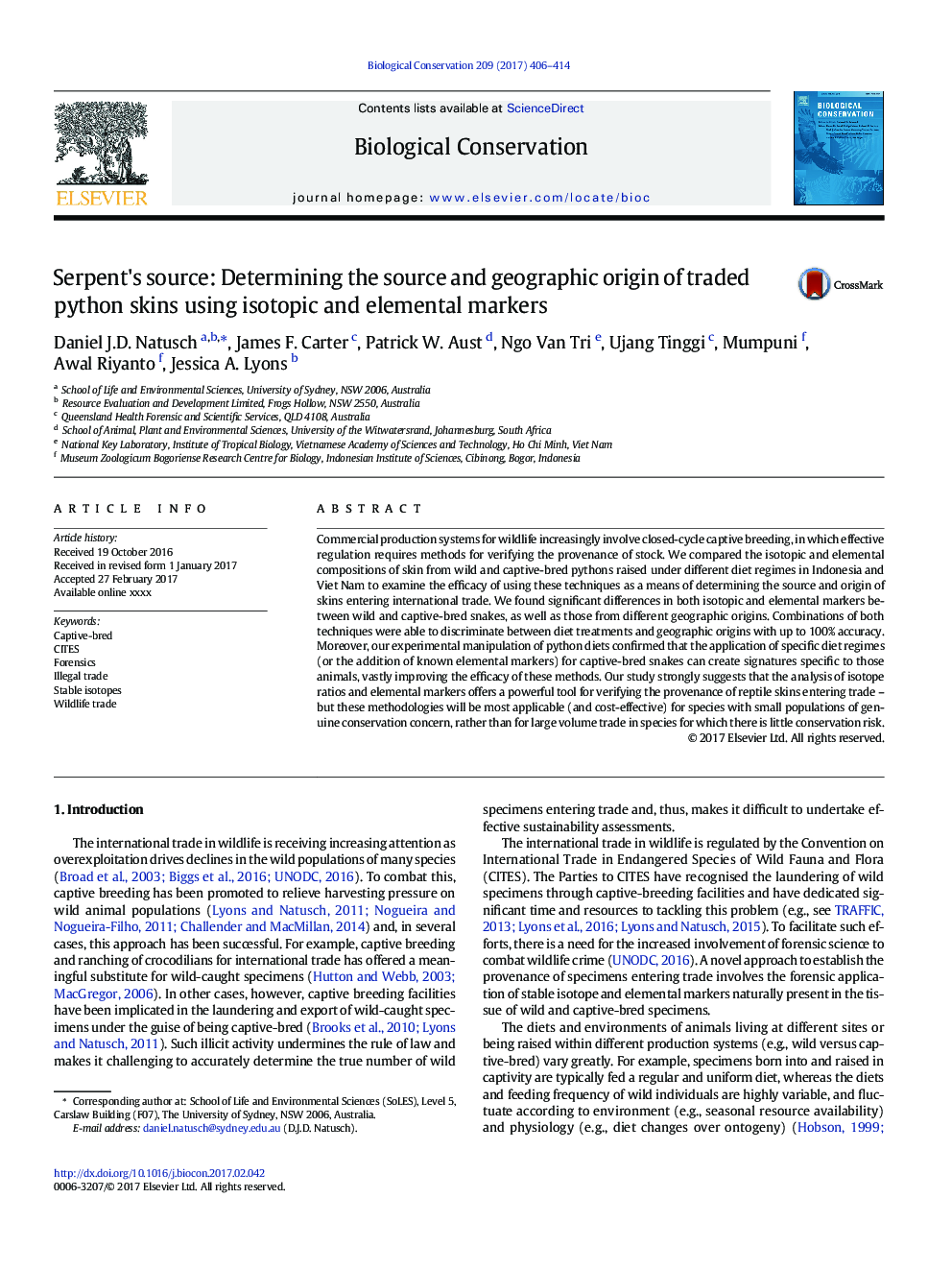| Article ID | Journal | Published Year | Pages | File Type |
|---|---|---|---|---|
| 5743343 | Biological Conservation | 2017 | 9 Pages |
Abstract
Commercial production systems for wildlife increasingly involve closed-cycle captive breeding, in which effective regulation requires methods for verifying the provenance of stock. We compared the isotopic and elemental compositions of skin from wild and captive-bred pythons raised under different diet regimes in Indonesia and Viet Nam to examine the efficacy of using these techniques as a means of determining the source and origin of skins entering international trade. We found significant differences in both isotopic and elemental markers between wild and captive-bred snakes, as well as those from different geographic origins. Combinations of both techniques were able to discriminate between diet treatments and geographic origins with up to 100% accuracy. Moreover, our experimental manipulation of python diets confirmed that the application of specific diet regimes (or the addition of known elemental markers) for captive-bred snakes can create signatures specific to those animals, vastly improving the efficacy of these methods. Our study strongly suggests that the analysis of isotope ratios and elemental markers offers a powerful tool for verifying the provenance of reptile skins entering trade - but these methodologies will be most applicable (and cost-effective) for species with small populations of genuine conservation concern, rather than for large volume trade in species for which there is little conservation risk.
Related Topics
Life Sciences
Agricultural and Biological Sciences
Ecology, Evolution, Behavior and Systematics
Authors
Daniel J.D. Natusch, James F. Carter, Patrick W. Aust, Ngo Van Tri, Ujang Tinggi, Mumpuni Mumpuni, Awal Riyanto, Jessica A. Lyons,
